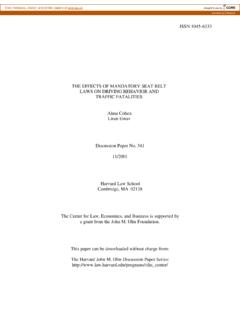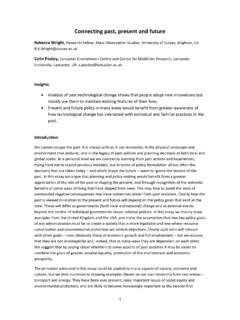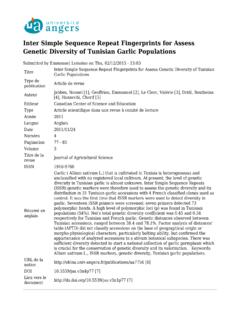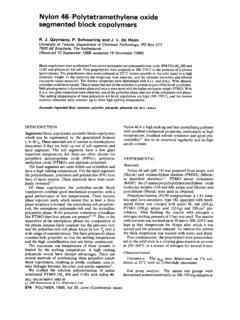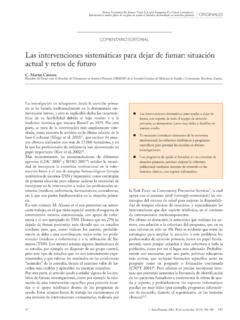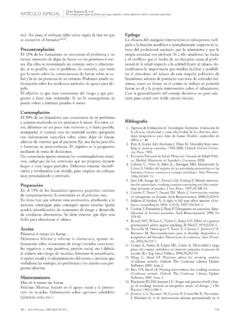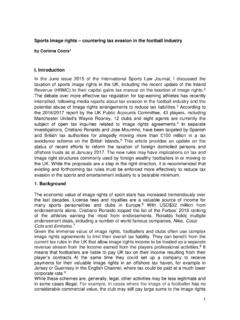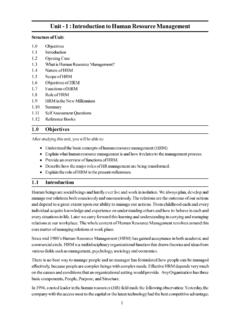Transcription of Communication Accommodation Theory - CORE
1 Chapter 5/20/2006 5:00 PM Page 293. Giles, H., & Ogay, T. (2007). Communication Accommodation Theory . In B. B. Whaley & W. Samter (Eds.), Explaining Communication : Contemporary theories and exemplars (pp. 293-310). Mahwah, NJ: Lawrence Erlbaum. 16. Communication Accommodation Theory Howard Giles and Tania Ogay University of California, Santa Barbara INTRODUCTION. Imagine a conversation between an older male professor of British origin, a male African American undergraduate student, and a female postdoctoral student from Switzerland taking place in an American University. Think of the variety of social dimensions involved in this situation: gender, culture and ethnicity, social and occupational status, age, and so forth.
2 How are the different personal and social identities negotiated during the interaction? Who changes his or her communicative style to accommodate whom? What are the outcomes of such accommodating behaviors on the relationship between the interactants? In what follows, we shall make frequent use of this scenario. Communication Accommodation Theory (CAT) provides a wide-ranging framework aimed at predicting and explaining many of the adjustments individuals make to create, main- tain, or decrease social distance in interaction. It explores the different ways in which we accommodate our Communication , our motivations for doing so, and the consequences. CAT. addresses interpersonal Communication issues, yet also links it with the larger context of the intergroup stakes of an encounter.
3 In other words, sometimes our communications are driven by our personal identities as Janet or Richard while at others and sometimes within the very same interaction our words, nonverbals, and demeanor are fueled, instead and almost entirely, by our social identities as members of groups; that is Janet now speaks not so much as the individual Janet but as someone who represents Communication scholars to groups of chemists, biologists, and physicists. Since its inception in the early 1970s, CAT has undergone several conceptual refinements and theoretical elaborations, as exemplified by moves from speech into the nonlinguistic (Giles, Mulac, Bradac, & Johnson, 1987). Originally a sociopsychological model exploring accent and 293.
4 Chapter 5/20/2006 5:00 PM Page 294. 294 GILES AND OGAY. bilingual shifts in interactions (Giles, 1973; Giles, Taylor, & Bourhis, 1973), CAT has been expanded into an interdisciplinary model of relational and identity processes in communicative interaction (N. Coupland & Jaworski, 1997, pp. 241 242). Although language remains a cen- tral focus of the Theory , other communicative symbols that people use to signal their identities ( , dress and hair styles, cosmetics, and eating patterns) can also be understood from a CAT. perspective. Because the extensive amount of CAT research and theorizing can be somewhat overwhelming, predictive models have been developed in an effort to better organize and sum- marize thinking on these matters.
5 In addition, recent theoretically driven reviews of research, engaged in a more textually flowing nonpropositional fashion, have emerged. References for specific work in these domains are presented at the end of the chapter. For now, we'll begin with a presentation of the basic principles and concepts of the Theory , and thereafter we will review different areas where CAT has been applied and expanded. BASIC PRINCIPLES AND CONCEPTS OF CAT. Basic Principles of CAT. Communication is influenced not only by features of the immediate situation and par- ticipants' initial orientations to it, but also by the socio-historical context in which the interaction is embedded. For example, an isolated encounter between any particular police officer and citizen could be marred by alleged and past hostile relations between other members of these two groups in the neighborhood or on the media (as would be apparent probably for many citizens of color in the Rampant area of Los Angeles).
6 Communication is not only a matter of merely and only exchanging information about facts, ideas, and emotions (often called referential communications), but salient social category memberships are often negotiated during an interaction through the process of accommo- dation. For example, when being quizzed by Howard Giles British relatives on some (for them, curious) aspect of American entertainment and media, his shift from a British into a more American dialect is meant to be far more telling than the overt answer provided. Being conveyed here is the feeling that he is no longer a recent immigrant to the United States, but now a fully fledged American citizen who has embraced many American ideals.
7 Interactants have expectations regarding optimal levels of Accommodation . These expec- tations are based on stereotypes about outgroup members as well as on the prevailing social and situational norms. Calibrating the amount of non-, under-, and overaccom- modating one receives can be an important ingredient in continuing or withdrawing from an interaction;. Interactants use specific Communication strategies (in particular, convergence and diver- gence) to signal their attitudes towards each other and their respective social groups. In this way, social interaction is a subtle balance between needs for social inclusiveness on the one hand, and for differentiation on the other. As this last principle was the original cornerstone of CAT and spawned many of the empirical studies flowing from it, we shall move to a discussion of convergence and divergence studies next.
8 Strategies of Convergence and Divergence CAT suggests that individuals use Communication , in part, in order to indicate their attitudes toward each other and, as such, is a barometer of the level of social distance between them. Chapter 5/20/2006 5:00 PM Page 295. 16. Communication Accommodation Theory 295. This constant movement toward and away from others, by changing one's communicative behavior, is called Accommodation . Among the different accommodative strategies that speakers use to achieve these goals, convergence has been the most extensively studied and can be considered the historical core of CAT (Giles, 1973). It has been defined as a strategy whereby individuals adapt their communicative behaviors in terms of a wide range of lin- guistic ( , speech rate, accents), paralinguistic ( , pauses, utterance length), and nonver- bal features ( , smiling, gazing) in such a way as to become more similar to their interlocutor's behavior.
9 For instance, during the (1973) Watergate Hearings, John Dean (coun- selor to then President Nixon) accommodated the formality of his language style to that of four of the Senators questioning him, presumably so as to sound convincing to them (Levin & Lin, 1988). Thomson, Murachver, and Green (2001) examined Accommodation in com- munication via e-mail and found that, even in this rather bare context, women and men con- verged to the language style (more female- or male-like) of their Net-pals. Conversely, the strategy of divergence leads to an accentuation of speech and nonverbal differences between self and the other. For instance, recently, Linford Christie (a Black British Olympic gold medal winner) was accused in the press of deliberately using divisive and incomprehensible Creole English by an influential fellow (White) athlete.
10 Clearly, his motive for speaking in this manner was very different from the intent attributed by others to it; one possibility being that he was emphasizing the value of his ethnic identity in the context of this sport's administrative leadership being White, and perhaps exclusionary (see Bourhis & Giles, 1977). A phenomenon similar to divergence is maintenance whereby a per- son persists in his or her original style, regardless of the Communication behavior of the inter- locutor (Bourhis, 1979). One of us recalls the occasion in which he first went to a Heads of Physical Sciences Meeting attired in his typical casual manner. Our hero will never forget the aghast looks with which he was greeted by a dark-suited assembly upon entering the room!
